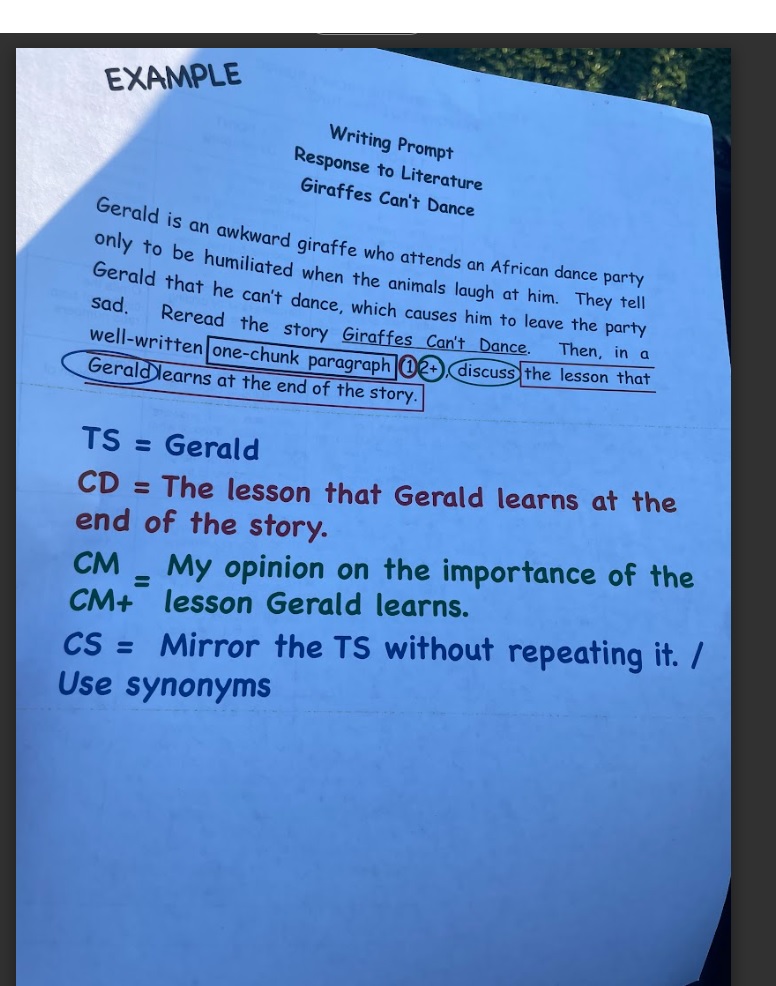Stages in the Teaching of JSWP® Academic Writing Process
The Gradual Release Model, or guided instruction teaching strategy, ensures that students are supported in their acquisition of the skills and strategies necessary for successful writing. Implementing the gradual release of responsibility model requires time and careful instructional planning to ensure student success in independent writing.
The goal of guided instruction in the gradual release of responsibility model is to guide students toward using different skills, strategies, and procedures independently. Hence the student will continually assume more responsibility with less support from the teacher. Lessons are created to ensure student success.
The Stages in the Gradual Release Model
Stage 1: Modeling – “I do it.”
The teacher establishes the purpose of the lesson and models his or her thinking. The purpose should be based on the expected learning outcomes, such as standards, and be clearly communicated to students. Teacher modeling should provide students with examples of the thinking and language required to be successful.
THE TEACHER
- Provides direct instruction;
- Establishes goals and purpose;
- Models desired outcomes; and
- Utilizes the “Think Aloud” teaching strategy.
THE STUDENT
- Actively listens;
- Takes notes; and
- Asks for clarification.
Stage 2: Guided Instruction – “We do it.”
The teacher strategically presents questions, prompts, and cues to facilitate student understanding. This can be done with whole groups of students but is probably more effective with small groups that are convened based on instructional needs. During guided instruction, the teacher focuses on releasing responsibility to students while providing instructional scaffolds to ensure that students are successful.
THE TEACHER
- Creates interactive instruction;
- Works with students;
- Checks, prompts, clues;
- Provides additional modeling;
- Meets with needs-based groups; and
- Asks and responds to questions.
THE STUDENT
- Works with teacher and classmates; and
- Completes the process alongside others.
Stage 3: Semi-Independent Work — “You do it together.”
Students work in collaborative groups to produce something related to the topic at hand. To be productive, the collaboration must involve students using academic language and being individually accountable for their contribution to the effort. This phase of instruction should provide students with an opportunity to consolidate their understanding before they apply it independently.
THE TEACHER
- Moves among the groups;
- Clarifies areas of confusion; and
- Provides support.
THE STUDENT
- Works with one or more classmates;
- Collaborates on the authentic task;
- Consolidates learning;
- Completes process in the small group; and
- Looks to peers for clarification.
Stage 4: Independent Work — “You do it alone.”
Students apply what they have learned in class and outside of class. Many independent learning tasks are used as formative assessments, designed to check for understanding and to identify needs for reteaching. Of course, independent learning tasks should not come too soon in the instructional cycle since students need practice before they can sufficiently apply knowledge in new situations.
THE TEACHER
- Evaluates student work;
- Determines level of understanding;
- Provides feedback; and
- Intervenes as appropriate.
THE STUDENT
- Works independently;
- Relies on notes, activities, and classroom models to complete the assignment; and
- Takes full responsibility for the outcome.






